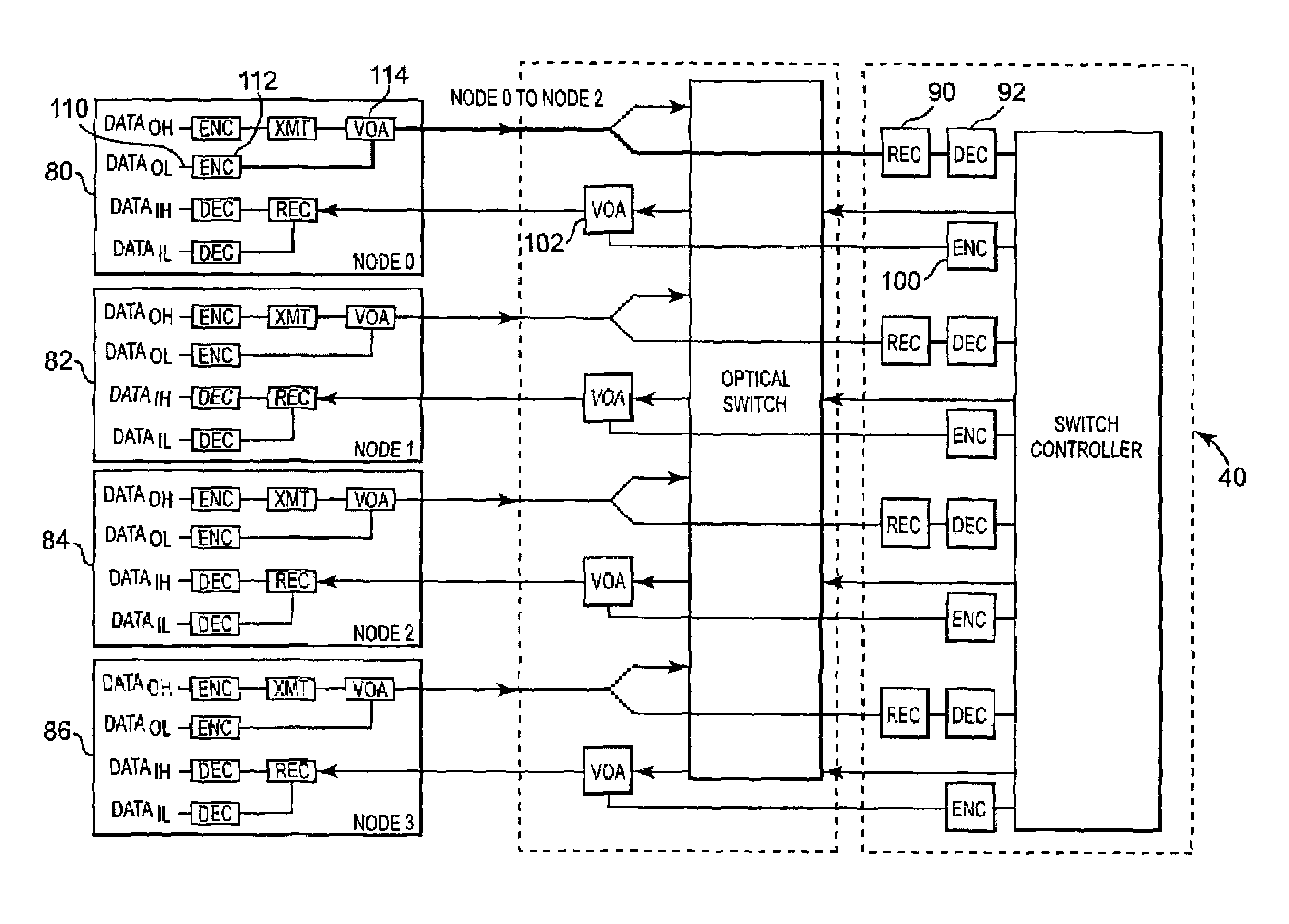Data communication network using optical power averaged multiplexing
a data communication network and optical power technology, applied in the field of optical communication systems, can solve the problems of large power required to achieve the required conversion/transformation, unsatisfactory complications, and size problems, and achieve the effects of improving speed, size, power consumption and flexibility
- Summary
- Abstract
- Description
- Claims
- Application Information
AI Technical Summary
Benefits of technology
Problems solved by technology
Method used
Image
Examples
Embodiment Construction
[0023]As can been seen in FIG. 1, one embodiment of the present invention includes a data communication system 10 which includes a plurality of nodes 20, each of which are connected to an optical switch 30. Additionally, the communication system 10 also includes a controller 40 which is connected to switch 30. It is understood that all of the above connections or attachments, as shown in FIG. 1, indicate a transmission path between these various components. While FIG. 1 illustrates one potential layout, the system is not restricted to the specific physical configuration shown.
[0024]As will be further outlined below, each node 20 is configured to transmit and receive data. Nodes 20 may take on many different forms, including a part of separate processing systems, and / or remote components of different types. For example, some of the nodes could be memory resources accessed by other nodes that are processors. In general, the nodes could be either a homogenous or heterogeneous collectio...
PUM
 Login to View More
Login to View More Abstract
Description
Claims
Application Information
 Login to View More
Login to View More - R&D
- Intellectual Property
- Life Sciences
- Materials
- Tech Scout
- Unparalleled Data Quality
- Higher Quality Content
- 60% Fewer Hallucinations
Browse by: Latest US Patents, China's latest patents, Technical Efficacy Thesaurus, Application Domain, Technology Topic, Popular Technical Reports.
© 2025 PatSnap. All rights reserved.Legal|Privacy policy|Modern Slavery Act Transparency Statement|Sitemap|About US| Contact US: help@patsnap.com



